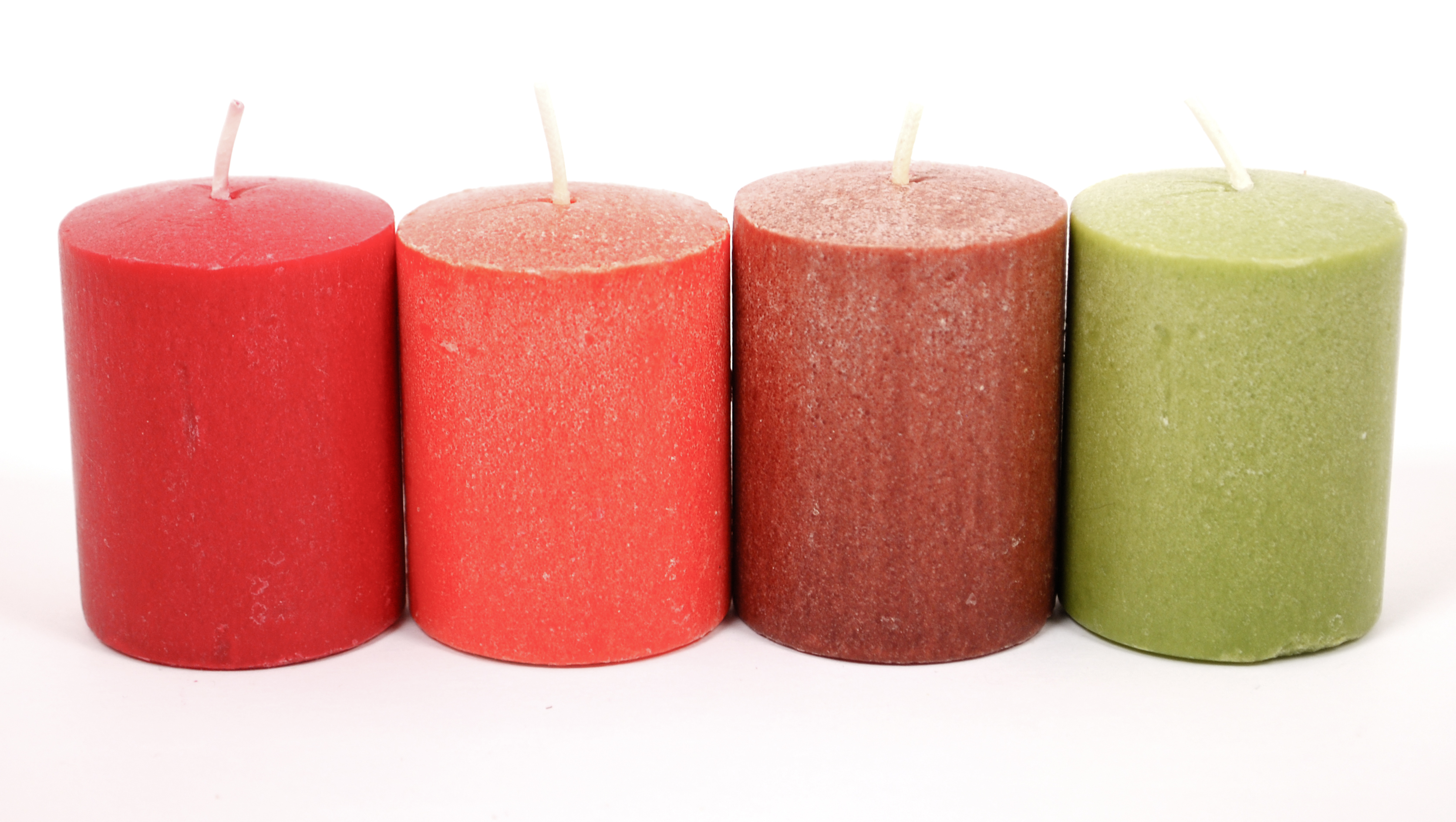
Candle

Introduction About candle
There is the simple definition for candles which is an ignitable wick embedded in wax and/or other flammable solid substance. For a candle to burn, a naked flame is necessary to light the candle’s wick. Once the heat vaporizes the fuel, fuel combines with oxygen and forms flame. Then flame provides sufficient heat to keep the candle burning. As this process continues candle becomes shorter till burning fuel runs out.
History of Candle
Candles played important role in humankind development. Depend on the geographical locations mankind used different fuel as raw material to make candles. For example, in China around 200 BC Whale fat used as raw material. In Europe, people made candles from natural fat. As time goes by other fuels replaced the old ones such as animal fat replaced by the beeswax. Around 1850 a revolutionized candle making method invented that made candles commercially available and affordable. At this time paraffin wax distilled from coal replaced all fuels in order to make high quality and cheap candles.
Around 1900, candle industry declined rapidly upon the introduction of the incandescent light bulb. From 1900 expansion of electricity network and availability of electricity made candles to become the more decorative product.
Raw materials for candle making
As mentioned above, type of candle fuel in the construction of candles changed during the past 200 years. Today the most commercial candle fuel available worldwide is the paraffin wax. As the demand changes candle manufacturers forced to comply with the market forces in order to create stronger and high melting point candles. There are several commercial standards for candles. In the United States candles are required to have at least 60 percent paraffin wax. Other additives such as stearic acid, carnauba wax can be mixed with paraffin wax to modify the softening and/or melting point of the finished wax. Other wax types such as Beeswax and Soy wax are used by candle manufacturers to make natural candles, but they are become more expensive compared to candles made from paraffin wax. Wicks are needed to be made from high-quality cotton or linen in order it burns in one direction.
The manufacturing of candle involves three simple steps
Making The Wick
Preparation Of Wax
Molding The Candle
Making the wick
In this process cotton or linen are treated with chemicals, in order to achieve 90-degree angle at the time of burning the wick. This angle and treatment are so important because as the candle is burning, it might burn too quick and melted wax extinguished the flame. On the other hand, if the wick burns too slowly, exposed wick upsurges and candle become unsafe.
Preparing Of Wax
In this process all waxes such as paraffin wax, soy wax, beeswax and so on along with additives like stearic acid, color and etc will be placed in a tank. The tank can be made of steel or other metals. To mix the raw materials tank need to be heated. Heating can be applied directly by flame or indirectly by steam, electric elements and/or hot oils. Once the ingredients melted and mixed the wax base is ready to go through molding step.
Molding The Candle
As explained, once the wax base is ready, it will be transferred to candle making machines. These machines usually are holding from 50 up to 500 molds. Molds need to be cleaned and interior surface must be polished before loading the wax base for easier ejection of the finished candle. Once the wax is poured in molds the wick is pulled to prevent bending of the wick. Then the wax is cooled slightly by running cold water around the molds. At the time wax sets and become solid machine will eject the candles.
The alternative method is to use extrusion. In this process, paraffin wax and/or wax base is pumped through heated steel pipe under pressure. Wax will go around the wick to form candle and at the end, it will be cut into specific sizes.
Candle quality control
Various Standards have been applied by many countries to prevent harmful effect of candles on the user’s health or adversely affect the aesthetic appearance of the candles or their suitability for use. The most restricted standards for candle are RAL GZ 041 requirements. In particular, the following requirements have to be met at the point in time when the raw materials or additives are handed over from supplier to candle manufacturer.
Requirements for paraffin wax:
Paraffin waxes have got to match “hydrogenation quality”. This term represents a product purity that is characterized by the following criteria of purity irrespective of the refining methods used:
- Melt Point ASTM D87: Provides Information On Temperature At Which Most Of A Given Paraffin Wax Changes From A Solid To A Liquid.
- Congealing Point ASTM D938: Measures When A Paraffin Wax Ceases To Flow.
- Drop Melt Point ASTM D127: Generally Used On Waxes That Don’t Show A Melting Plateau Such AsPetrolatum And Microcrystalline Waxes.
- Needle Penetration ASTM D1321: Measures The Hardness Of Wax.
- Oil Content ASTM D721: The Amount Of Oil In Wax. Indicates Degree Of Refining.
- Kinematic Viscosity ASTM D445: The Resistance To Flow Of A Molten Wax At The Test Temperature.
- Color ASTM D6045: Visual Comparison Of Wax Color (Molten) Against Glass Color Standards.
Requirements for wicks
1- The wick consists of uniform, tear-resistant yarn made of medium-stapled and long-staple fibers on the cellulosic basis.
2- Cotton has got to fulfill the criteria of Öko-Tex Stand-ards 100 I or II.
3- Other materials may be used for supporting threads if their intended use as candle wick is in line with the aspects of preventive health protection.
4- Wicks must not contain more than 5 mg/kg lead or 5 mg/kg nickel.
5- The design of the wick has got to comply with the manufacturer´s documentation.
